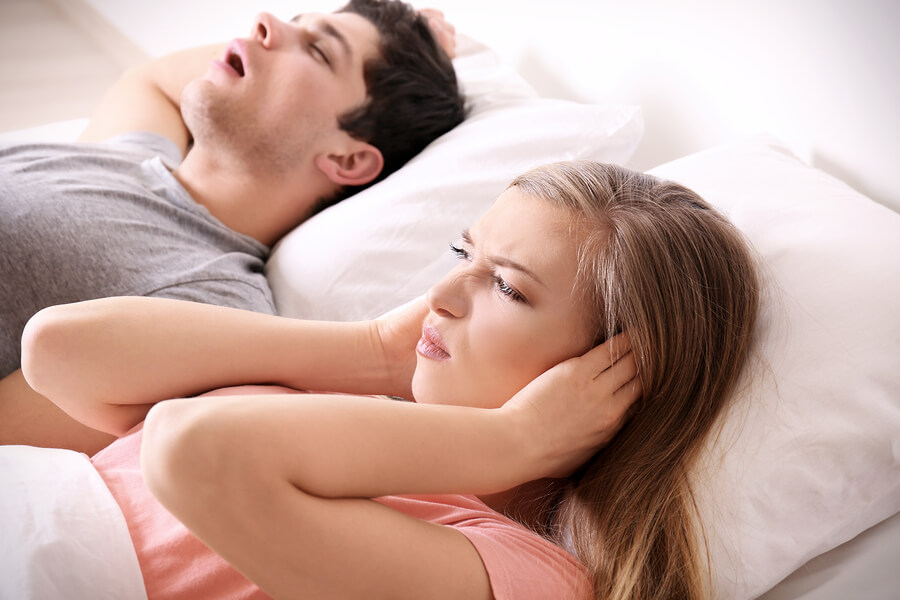It is a more than common disorder affecting roughly 20 million Americans that is characterized by brief pauses in breathing during sleep—it has been known to prevent individuals from getting their fair share of a good night’s rest. The cessations in breathing, which is due to partly or fully blocked airways, can occur anywhere from only a few times a night to up to hundreds, forcing the brain to emerge from the deeper stages of sleep to help the body to begin breathing again.
Sleep apnea is usually discovered by a partner who notices the symptoms, which include snoring, gasping, or sometimes even choking for breath during sleep. If left untreated, it can cause abnormal heart rhythms, high blood pressure, heart enlargement, poor memory irritability, depression, lack of concentration. It is important to be familiar with three forms of sleep apnea and to fully understand the various different symptoms, causes, and treatments of each.
Whether you yourself have been diagnosed with sleep apnea or think your partner may have the condition, there are likely a bunch of questions that you’ll want to ask. Learning more about the types of sleep apnea and exactly how it’s treated is key to helping anyone better manage the condition, to decrease complications, and to improve on sleep quality.
Obstructive Sleep Apnea (OSA)
Obstructive sleep apnea (OSA) is the most common form of sleep apnea in which the throat muscles relax. It accounts for at least 80% of cases and approximately 4% of men and 2% of women are have been known to be affected. Only 10% of people, however, have successfully sought treatment, leaving the majority of OSA sufferers undiagnosed.
OSA is caused by partial or complete blockage of the airways during sleep in which a person’s throat muscles relax during sleep, allowing the tongue and/or fatty tissues of the throat to fall back into the airways and block airflow.
Typically, during an apnea event, air is restricted from moving beyond the obstruction, which goes on to reduce blood flow to the brain. The brain is partially awakened from sleep in order to signal the body that it needs to breathe, resulting in loud gasping, choking, or snorting sounds to follow as the individual struggles to take a deep enough breath to fight past the obstruction.
Those with OSA have a “mechanical” problem with the tissue in their mouth and throat and can be treated with the simple use of a CPAP machine, which blows pressurized air through the windpipe in order to allow the patient to breathe normally.
Central Sleep Apnea (CSA)
Central sleep apnea occurs when the brain temporarily fails to signal the muscles responsible for controlling breathing. Unlike obstructive sleep apnea, which is thought of as a mechanical problem, central sleep apnea is more of a communication problem—a neurological problem where patients are still physically able to breathe. It is the brain that is telling them not to do so, causing carbon dioxide to build up in the body and oxygen levels to dip.
The condition is much less common than obstructive sleep apnea and affects approximately only 20% of sleep apnea cases. CSA is typically caused by medical problems and conditions affecting the brainstem.
Many a times, CSA is also associated with other serious medical conditions such as congestive heart failure, kidney failure, or neurological diseases like Parkinson’s disease. It can be treated using adaptive servo-ventilation (ASV), which is similar to a CPAP machine– it measures the patient’s breathing and adjusts pressure levels to his specific breathing patterns. CPAP or Bi-level machines can also be used to treat CSA.
Mixed Sleep Apnea
Some patients being treated for obstructive sleep apnea with the use of CPAP machines develop symptoms of central sleep apnea upon PAP therapy, a phenomenon that became extremely noticed in sleep labs throughout the years, but that had not been previously researched.
In 2006 researchers from the Mayo Clinic conducted a study of 223 sleep apnea patients and found that 15% of sleep apnea patients who were believed to have OSA in fact had Mixed Sleep Apnea. It is widely known as Complex sleep apnea syndrome, or as treatment-emergent central sleep apnea, a mixture of the two major types of sleep apnea.
Trust the Professionals
If you think you might have one of these types of sleep apnea, please reach out and contact Dr. Shukla at Sleep MD NYC to get the help and care you deserve. Treatment can ease your symptoms and may help prevent heart problems and other complications. The primary goal at Sleep MD NYC is to help you receive the best sleep possible every night and all the time. So, keep healthy and rid yourself of any sleep-related problems today!


